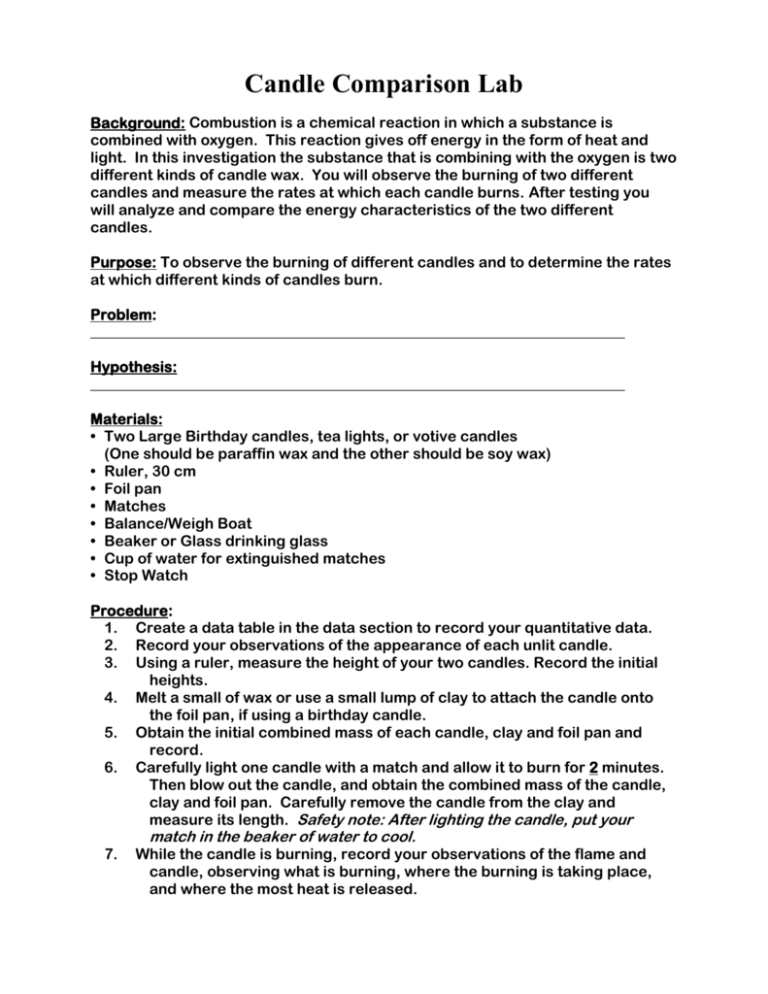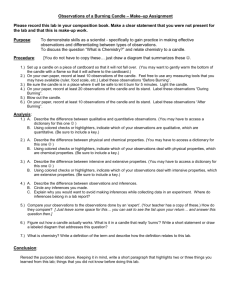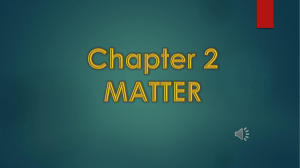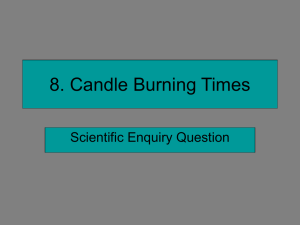interval clay
advertisement

Candle Comparison Lab Background: Combustion is a chemical reaction in which a substance is combined with oxygen. This reaction gives off energy in the form of heat and light. In this investigation the substance that is combining with the oxygen is two different kinds of candle wax. You will observe the burning of two different candles and measure the rates at which each candle burns. After testing you will analyze and compare the energy characteristics of the two different candles. Purpose: To observe the burning of different candles and to determine the rates at which different kinds of candles burn. Problem: _______________________________________________________________________ Hypothesis: _______________________________________________________________________ Materials: • Two Large Birthday candles, tea lights, or votive candles (One should be paraffin wax and the other should be soy wax) • Ruler, 30 cm • Foil pan • Matches • Balance/Weigh Boat • Beaker or Glass drinking glass • Cup of water for extinguished matches • Stop Watch Procedure: 1. Create a data table in the data section to record your quantitative data. 2. Record your observations of the appearance of each unlit candle. 3. Using a ruler, measure the height of your two candles. Record the initial heights. 4. Melt a small of wax or use a small lump of clay to attach the candle onto the foil pan, if using a birthday candle. 5. Obtain the initial combined mass of each candle, clay and foil pan and record. 6. Carefully light one candle with a match and allow it to burn for 2 minutes. Then blow out the candle, and obtain the combined mass of the candle, clay and foil pan. Carefully remove the candle from the clay and measure its length. Safety note: After lighting the candle, put your 7. match in the beaker of water to cool. While the candle is burning, record your observations of the flame and candle, observing what is burning, where the burning is taking place, and where the most heat is released. 8. Repeat steps 4-7 four more times, for a total burning time of 10 minutes. Each time you should secure the candle in the clay before lighting, measure the combined mass of the candle, clay and foil after burning, and then remove it from the clay to measure its length. 9. After completing trials for one candle, repeat for the other candle. If you have groups of 4, each student pair can test a different candle at the same time. 10. Relight the candle and place a beaker upside down over the candle. Record your observations of the candle flame and the interior of the beaker, and record the time it takes for the candle to be extinguished. Repeat with the second candle and again, record observations and the time it takes for the candle to be extinguished. 11. When you are finished, place the extinguished candle in the beaker. DO NOT put any matches or candles on your tables or in the sink – they should all be placed in the beaker, and put into the trash at the end of the lab. Data Collection: In the space here make your data chart(s) to collect your information. Analysis (show all calculations): 1.Graph the data. You will produce 2 graphs for each candle: candle height vs. time, and candle mass vs. time. 2.For each graph, which variable is the independent variable? Which is the dependent variable? 3.Using your graphs, estimate how much of both height and mass each candle lost in two minutes. 4.Calculate the rate of burning in terms of height (mm/min) and mass (g/min) for each 3-minute time interval for each candle. 5.Calculate the average burning rate in terms of both height and mass for each candle. 6.Do the candles burn at a constant rate or do the rates vary? How do you know this? 7.Calculate the changes in both height and mass for two minutes for each candle. 8.Calculate how long it would take for each candle to reach a height of 2.5cm. 9.Calculate how long it would take for each entire candle to completely burn out from start to finish. 10. Which changes that you observed were physical changes? Which were chemical changes? 11. What was the role of the wick in the candle? 12. Why does the flame diminish when the burning candle is covered with a beaker? What do you think the substances are that formed inside the beaker? Did both candles produce the same substances? The same quantity of substances? How could you determine this quantitatively? Conclusion (Please answer the questions in complete sentences as your conclusion paragraph): 1.State your findings. Refer to the problem and your hypothesis. 2.Hypothesize why the rates of the two candles vary. 3.How can your findings be related energy in biofuels vs. fossil fuels? 4.Explain the loss of mass of the candle during combustion in terms of the Law of Conservation of Mass. What are the products of combustion? Adapted from: http://www2.fultonschools.org/teacher/lepkofkers/Lab-burning_of_a_candle_lab.htm








